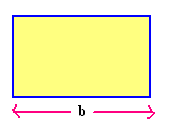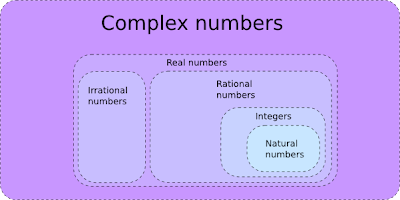Introduction:
A line can intersect a circle at two points or it can touch the circle at one point or never pass throught.
To find the point of intersection of line segment with a circle, we need to solve both equations. Thus we can get two points of intersection of the line with the circle.
Let us see few problems of this kind.
Example Problem on Line Segment Circle Intersection.
Ex 1: Find the point of intersection of the line 2x + y = 1 and x 2 + y 2 = 1.
Soln: Given: The line is 2x + y = 1 ……….. (1)
The circle is x 2 + y 2 = 1…………… (2)
(1) `=>` y = 1 – 2x
Therefore (2) = x 2 + (1 – 2x) 2 = 11 `=>` x 2 + 1 + 4x 2 – 4x = 11
`=>` 5x 2 – 4x – 10 = 0
Therefore x = `[4+- sqrt [(-4) ^2 ** 4(5) (-10)]] / [2 (5)]`
=` [4 +- sqrt [16 + 200]] / 10`
= `[4 +- sqrt 216] / 10`
=` [4 +- 6 sqrt 6] / 10`
= `[2 +- 3 sqrt 6] / 5`
Therefore y = `1 ** [2 [(2 + 3 sqrt 6) / 5]]`
= `[5 ** 4 ** 6 sqrt 6] / 5`
= `[1 ** 6 sqrt 6] / 5`
When x = `[2 + 3 sqrt 6] / 5` , y = `[1 ** 6 sqrt 6] / 5`
When x = `[2 ** 3 sqrt 6] / 5` , y = `1 ** [2 [2 ** 3 sqrt 6] ]/ 5`
y =`[ 5** 4 + 6 sqrt 6 ]/ 5` = `[1 + 6 sqrt 6 ]/ 5`
Therefore the point of intersections are given by (`[2 + 3 sqrt 6] / 5` , `[1 ** 6 sqrt 6] / 5` ) and (`[2 ** 3 sqrt 6] / 5` , `[1 + 6 sqrt 6] / 5` )
Example Problem on Line Segment Circle Intersection.
Ex 2: Find the point of intersection of the following line and the circle. x – y = 1, x 2 + y 2 + 4x + 2y + 2 = 0.
Soln: Given: x– y = 1 = x = y + 1 ……….. (1)
x2 + y 2 + 4x + 2y + 2 = 0 ………... (2)
By using (1) in (2), we get (y + 1) 2 + y 2 + 4 (y + 1) + 2y + 2 = 0
`=>` y 2 + 2y + 1 + y 2 + 4y + 4 + 2y + 2 = 0
2y 2 + 8y + 7 = 0
y =`[ -8 +- sqrt[ 8 ^2 ** 4 (2) (7)]] / [2 (2)]`
= `[-8 +- sqrt 64 ** 56] / 4`
=` [-8 +- 2 sqrt 2] / 4` =`[-4 +- sqrt2]/2`
Therefore y = `[- 4 + sqrt 2 ]/ 2` , (1) `=>` x =` [-4 + sqrt 2 ]/ 2` + 1
= `[- 2 + sqrt 2] / 2`
y =` [-4 ** sqrt 2] / 2` , (1) `=>` x =` [-4 ** sqrt 2] / 2` + 1 = `[-2 ** sqrt 2 ]/ 2`
Therefore the points are (`[-2 + sqrt 2] / 2` , `[-4 ** sqrt 2] / 2` )
A line can intersect a circle at two points or it can touch the circle at one point or never pass throught.
To find the point of intersection of line segment with a circle, we need to solve both equations. Thus we can get two points of intersection of the line with the circle.
Let us see few problems of this kind.
Example Problem on Line Segment Circle Intersection.
Ex 1: Find the point of intersection of the line 2x + y = 1 and x 2 + y 2 = 1.
Soln: Given: The line is 2x + y = 1 ……….. (1)
The circle is x 2 + y 2 = 1…………… (2)
(1) `=>` y = 1 – 2x
Therefore (2) = x 2 + (1 – 2x) 2 = 11 `=>` x 2 + 1 + 4x 2 – 4x = 11
`=>` 5x 2 – 4x – 10 = 0
Therefore x = `[4+- sqrt [(-4) ^2 ** 4(5) (-10)]] / [2 (5)]`
=` [4 +- sqrt [16 + 200]] / 10`
= `[4 +- sqrt 216] / 10`
=` [4 +- 6 sqrt 6] / 10`
= `[2 +- 3 sqrt 6] / 5`
Therefore y = `1 ** [2 [(2 + 3 sqrt 6) / 5]]`
= `[5 ** 4 ** 6 sqrt 6] / 5`
= `[1 ** 6 sqrt 6] / 5`
When x = `[2 + 3 sqrt 6] / 5` , y = `[1 ** 6 sqrt 6] / 5`
When x = `[2 ** 3 sqrt 6] / 5` , y = `1 ** [2 [2 ** 3 sqrt 6] ]/ 5`
y =`[ 5** 4 + 6 sqrt 6 ]/ 5` = `[1 + 6 sqrt 6 ]/ 5`
Therefore the point of intersections are given by (`[2 + 3 sqrt 6] / 5` , `[1 ** 6 sqrt 6] / 5` ) and (`[2 ** 3 sqrt 6] / 5` , `[1 + 6 sqrt 6] / 5` )
Example Problem on Line Segment Circle Intersection.
Ex 2: Find the point of intersection of the following line and the circle. x – y = 1, x 2 + y 2 + 4x + 2y + 2 = 0.
Soln: Given: x– y = 1 = x = y + 1 ……….. (1)
x2 + y 2 + 4x + 2y + 2 = 0 ………... (2)
By using (1) in (2), we get (y + 1) 2 + y 2 + 4 (y + 1) + 2y + 2 = 0
`=>` y 2 + 2y + 1 + y 2 + 4y + 4 + 2y + 2 = 0
2y 2 + 8y + 7 = 0
y =`[ -8 +- sqrt[ 8 ^2 ** 4 (2) (7)]] / [2 (2)]`
= `[-8 +- sqrt 64 ** 56] / 4`
=` [-8 +- 2 sqrt 2] / 4` =`[-4 +- sqrt2]/2`
Therefore y = `[- 4 + sqrt 2 ]/ 2` , (1) `=>` x =` [-4 + sqrt 2 ]/ 2` + 1
= `[- 2 + sqrt 2] / 2`
y =` [-4 ** sqrt 2] / 2` , (1) `=>` x =` [-4 ** sqrt 2] / 2` + 1 = `[-2 ** sqrt 2 ]/ 2`
Therefore the points are (`[-2 + sqrt 2] / 2` , `[-4 ** sqrt 2] / 2` )

















